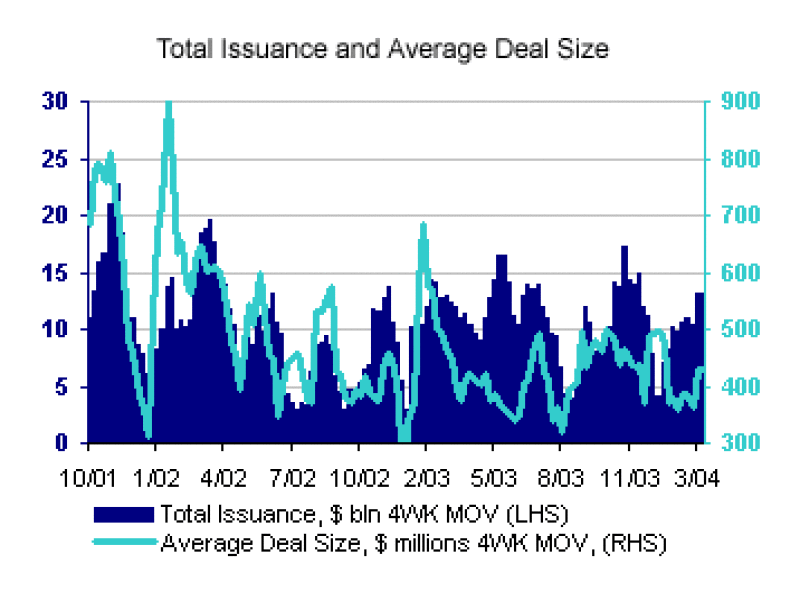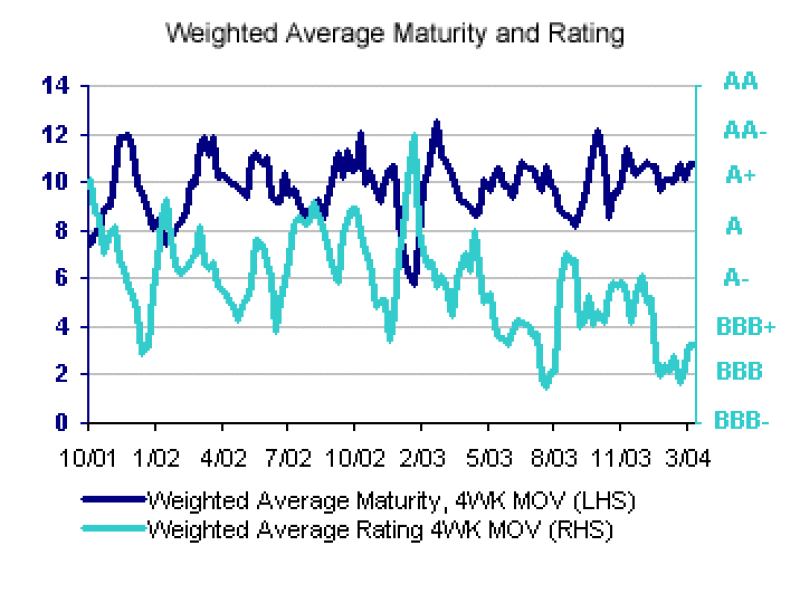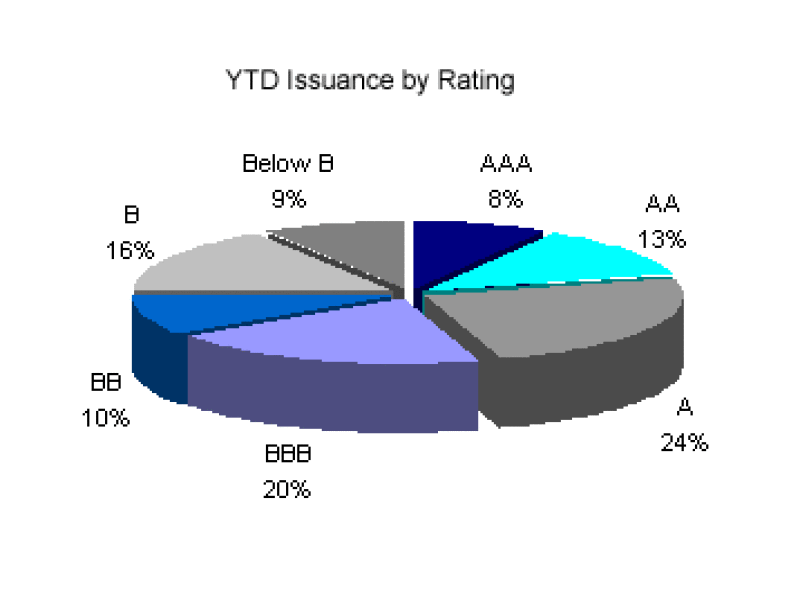


CreditSights: Digging Into Rating Actions
The most interesting trends to be found in the ratings data for the first quarter of 2004 were definitely below the surface. The headline numbers, as was expected, continue to show a trend of improving credit quality across the complete credit quality spectrum, at least as far as the downgrade data was concerned. Moody's Investors Service's numbers reveal that a total of 91 companies were downgraded during the quarter, affecting $81.4 billion of debt obligations, which compares to the 2003 quarterly average of 115 companies and $164.5 billion of downgrades.
Once again, the numbers provided evidence that the credit cycle is maturing without yet delivering much in the way of upgrades. Sixty-four companies and $44.6 billion of debt obligations were upgraded during the quarter, but this shows only minimal progress from 2003 quarterly averages (an average of 50 companies and $81 billion of debt were upgraded each quarter in 2003). A more positive spin on the upgrade scenario can be found by looking just at the rating action of non-financial companies as the 54 upgrades seen here well exceeded the 38 quarterly average of 2003 and was in fact the most of any quarter since the fourth quarter of 1999. Looking at fallen angels, the numbers remain very subdued; a total of five in the quarter impacting just $10 billion of debt. There were eight rising stars, but in total they accounted for only $7 billion of debt.
That the credit quality improvement reflected in the ratings activity has lagged the pricing moves in the securities markets comes as little surprise given the nature of ratings. The current lack of traction in the upgrade activity is reflective of the same phenomenon. Moody's reported that forward-looking ratings indicators such as outlook changes are indicating the upgrade trend will strengthen going forward. There were 32 favorable outlook changes in the first quarter, versus 23 unfavorable changes. But an improvement in credit quality is hardly breaking news. What was more interesting in the ratings data for the quarter was the factors that influenced some of the actions taken. The significance of "shocks" was driven home, particularly in relation to corporate governance issues in the fact that government investigations and litigation figured in six investment-grade downgrades and eight speculative-grade downgrades during the quarter.
The effect of merger & acquisition activity on credit quality is also noteworthy, particularly in light of the rapid escalation in deal volume seen throughout the quarter. Here the impact is not consistent across the investment-grade and speculative-grade arenas. M&A activity featured in only three investment-grade downgrades (affecting $2.7 billion) but was evident in six upgrades on $22 billion worth of bonds in this sector. In the high-yield arena, however, the M&A trend is being felt in a more negative way. According to Moody's, the first quarter recorded the most M&A-linked credit downgrades of high-yield companies in three years.
What is perhaps even more notable is that during the quarter there were 10 high-yield downgrades that were at least partly attributed to equity buybacks or dividend payments/increases. The $3.4 billion of bonds so affected stands well above the 2003 full-year total of $1.5 billion. That is not a trend that augurs well for high-yield debt holders in light of the general increase in shareholder activism as regards dividend payments. Nor is the fact that a further six downgrades among speculative-grade companies arose from the subordination of existing bondholders owing to additional debt raisings. Risk appetite for the high-beta names was definitely tempered over the quarter, but pricing in the sector could still be said to be optimistic if these prove to be the trends in ratings data that gain traction over the coming quarter.
Analysis by CreditSights, Inc., an independent online credit research platform. Call (212) 340-3888 or visit www.CreditSights.com for more information.





